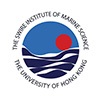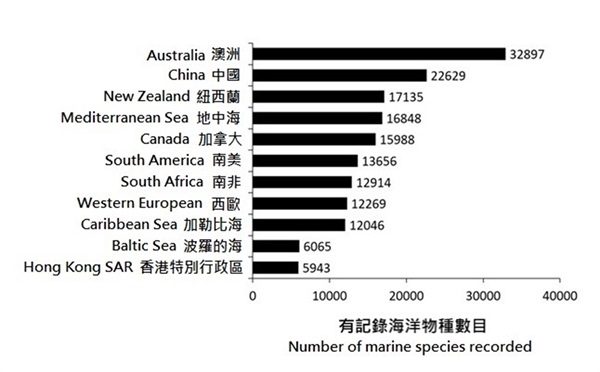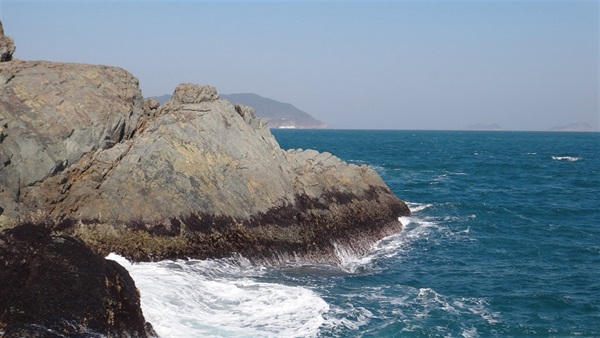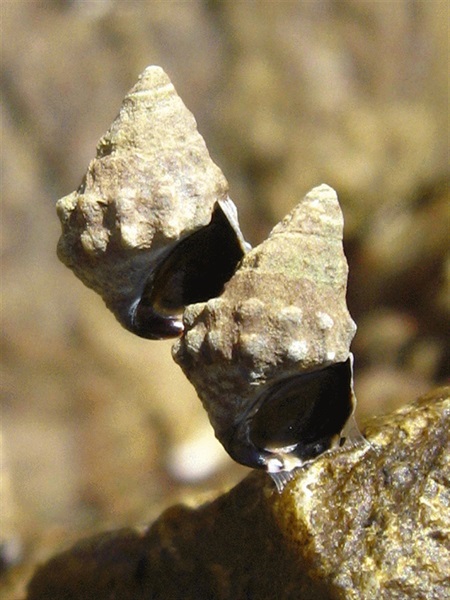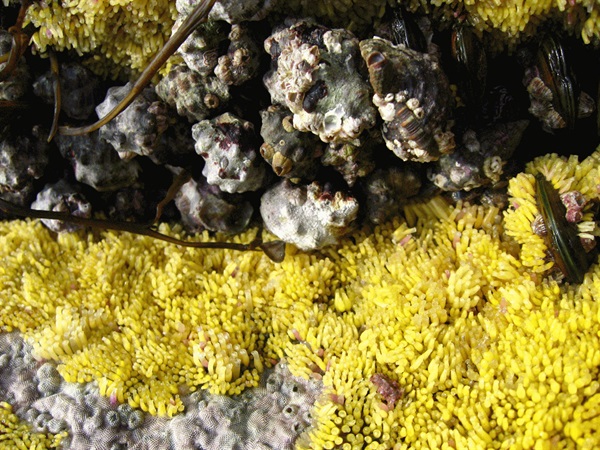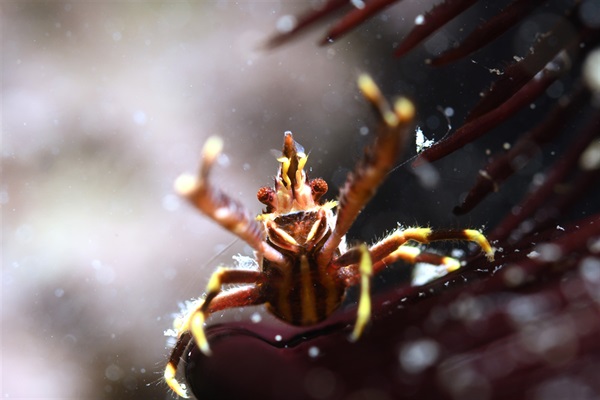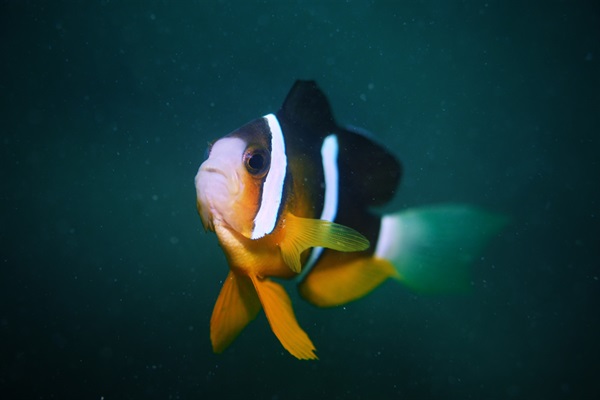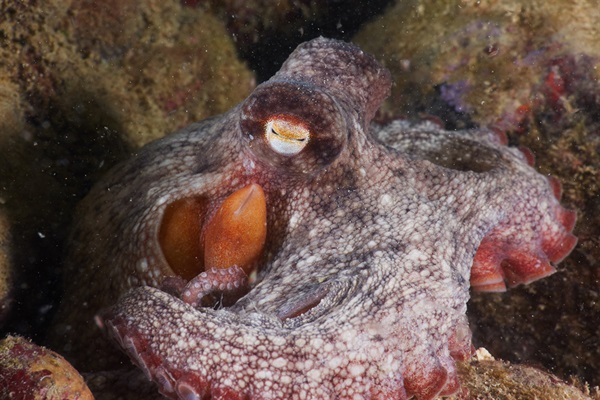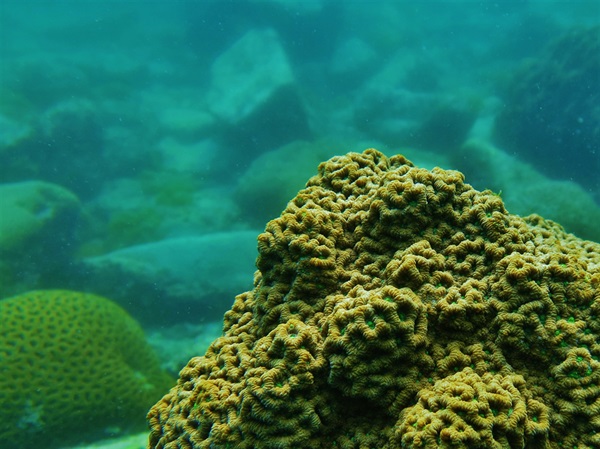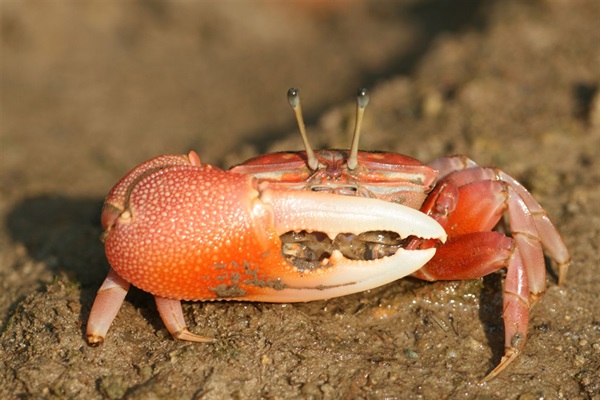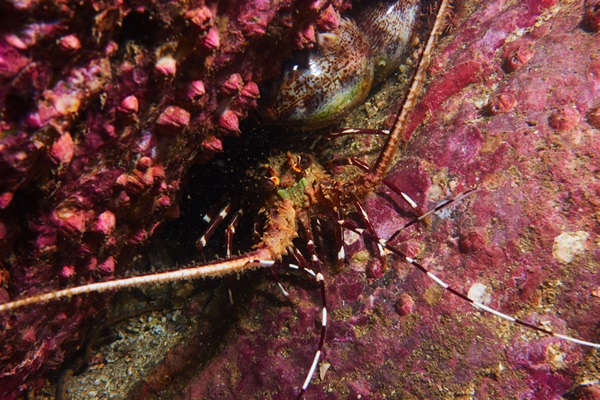How many species of sea life do we have in Hong Kong, and how does this compare with the rest of the world? These are key questions we need to answer in order to create a sustainable marine ecosystem and were the focus of this project. To answer these questions a team of researchers based at the Swire Institute of Marine Science searched through scientific papers, Government reports and consultancy projects from the 1940's to the present day to document all the species recorded from Hong Kong, noting down the location and year of the record as well as the methods used to make these assessments. Many of these records were difficult to trace, as location information was often outdated, as were the scientific names of the organisms, and so all of these had to be checked and processed to ensure accurate, high quality data. This data was compiled into a huge data base which allowed comparisons of Hong Kong's marine biodiversity with other parts of the world.
As it turns out, Hong Kong is incredibly rich with 5,943 species recorded all of which have been entered into a special Hong Kong node (i.e. Hong Kong Register of Marine Species) created under the umbrella of the largest global marine biodiversity database, the World Registry of Marine Species. Part of the data from the survey has also been incorporated into a territory wide GIS system which can be accessed by all stakeholders. With only about 1,640 km2 of marine area, representing only ~0.03% of China's total, Hong Kong's marine ecosystems support ~26% of all the marine species recorded in China. This biodiversity is very high given the small area of marine waters and compares favourably to many areas of the world with much larger marine areas.
The survey also revealed that whilst some areas of Hong Kong were relatively well studied (e.g. Cape d' Aguilar which has 16% of the species recorded in Hong Kong) others such as Mirs Bay and the Lamma channel deserve more attention. The report also reflected on the techniques used and revealed a great deal of variability in methodologies used and sampling effort, making it extremely difficult to compare between different studies and establish baseline data sets.
The results from this survey highlight the importance of protecting and conserving Hong Kong's incredibly rich biodiversity; the need for better species identification and standardisation of techniques to identify both hotspots to protect and areas which need further investigation, and provides a resource for use by stakeholders and managers in the future.
| Principal Investigator | Professor Gray A. WILLIAMS |
|---|---|
| Affiliation | The Swire Institute of Marine Science, The University of Hong Kong |
| Co-investigator | Professor Kenneth Mei Yee LEUNG |
| Period | 2012–2013 |
| Websites | http://www.marinespecies.org/hkrms/ https://www.tidehku.com/hk-coastal-gis-introduction |
| Funding Source | Environment and Conservation Fund |
Information Source: Professor Gray WILLIAMS
